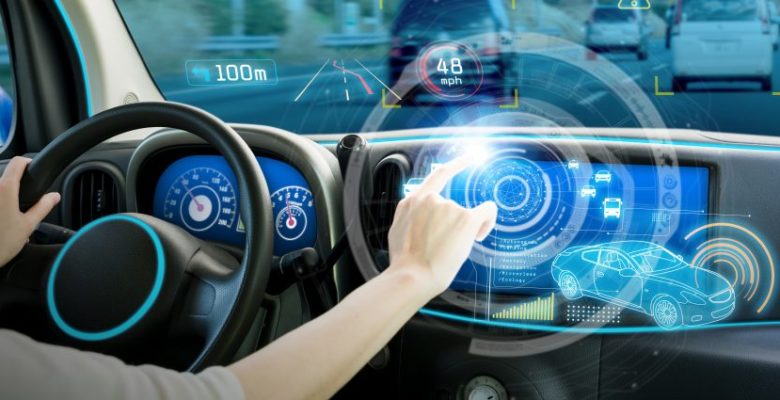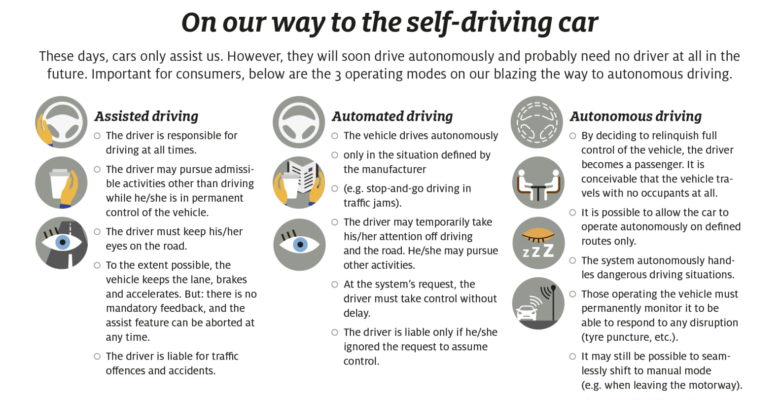 ADAC experts presented a new classification for driving automation systems for on-road motor vehicles, based on three modes of operation, instead of the six levels established by the Society of Automotive Engineers (SAE).
ADAC experts presented a new classification for driving automation systems for on-road motor vehicles, based on three modes of operation, instead of the six levels established by the Society of Automotive Engineers (SAE).
Below the details of this less complex model and its modes of operation.
- First operation mode: assisted driving. Drivers are responsible for driving at all times, are liable for traffic offences and accidents. To the extent possible, the vehicle keeps the lane, brakes and accelerates, but there is no mandatory feedback, and the assist feature can be aborted at any time.
- Second operation mode: automated driving. The vehicle drives autonomously only in the situation defined by the manufacturer (e.g. stop-and-go driving in traffic jams). Drivers may temporarily take their attention off driving and the road, but at the system’s request, they must take control without delay. They are liable only if they ignored the request to assume control.
- Third operation mode: autonomous driving. By deciding to relinquish full control of the vehicle, the driver becomes a passenger. It is conceivable that the vehicle travels with no occupants at all. The system autonomously handles critical driving situations and it is the operator rather than the driver that must permanently monitor the vehicle to be able to respond to any disruption. There is no liability on the part of passengers.
See the infographic below for more details:

Read ADAC article
Download ADAC infographic

 ADAC experts presented a new classification for driving automation systems for on-road motor vehicles, based on three modes of operation, instead of the six levels established by the Society of Automotive Engineers (SAE).
ADAC experts presented a new classification for driving automation systems for on-road motor vehicles, based on three modes of operation, instead of the six levels established by the Society of Automotive Engineers (SAE).